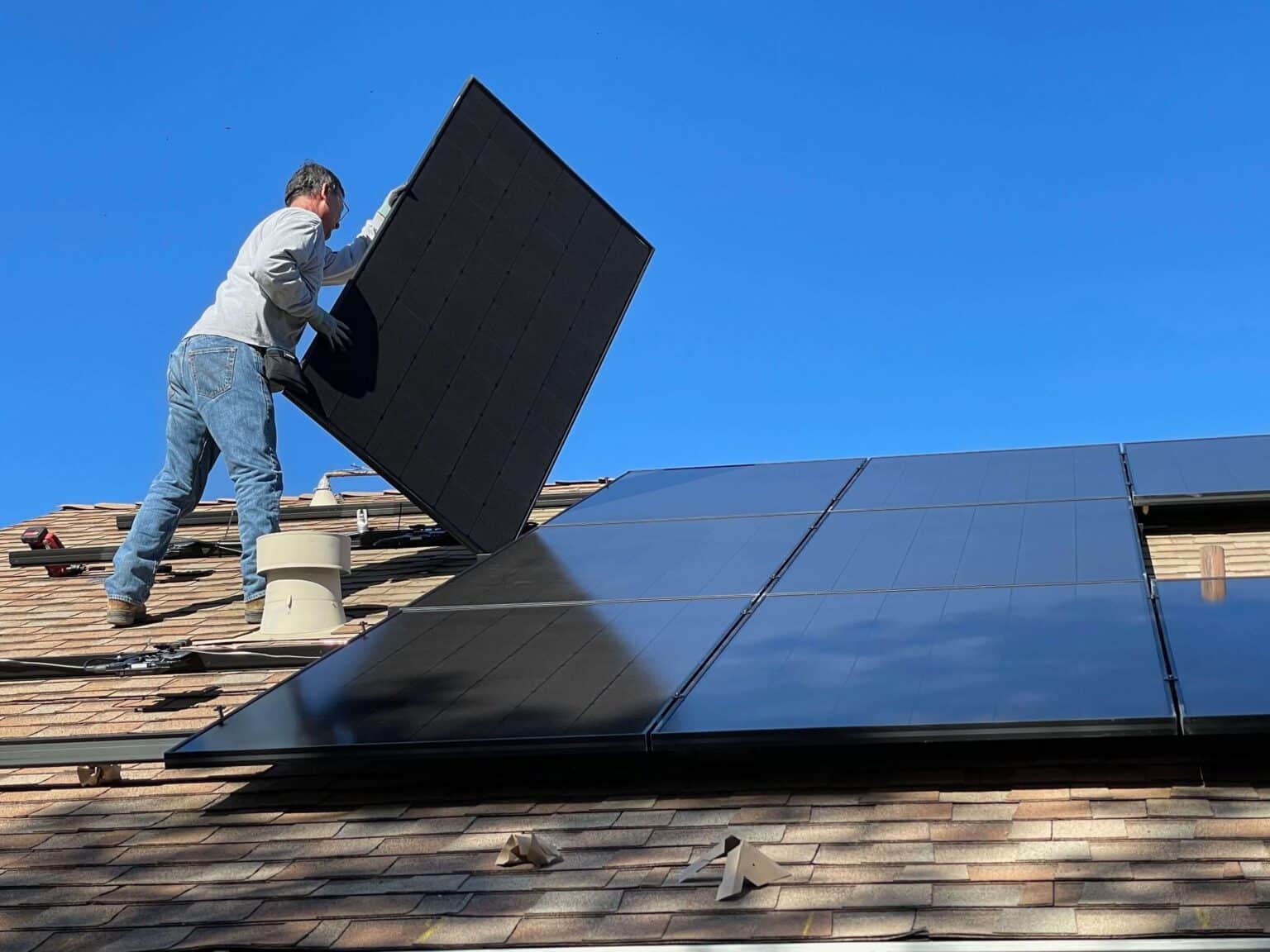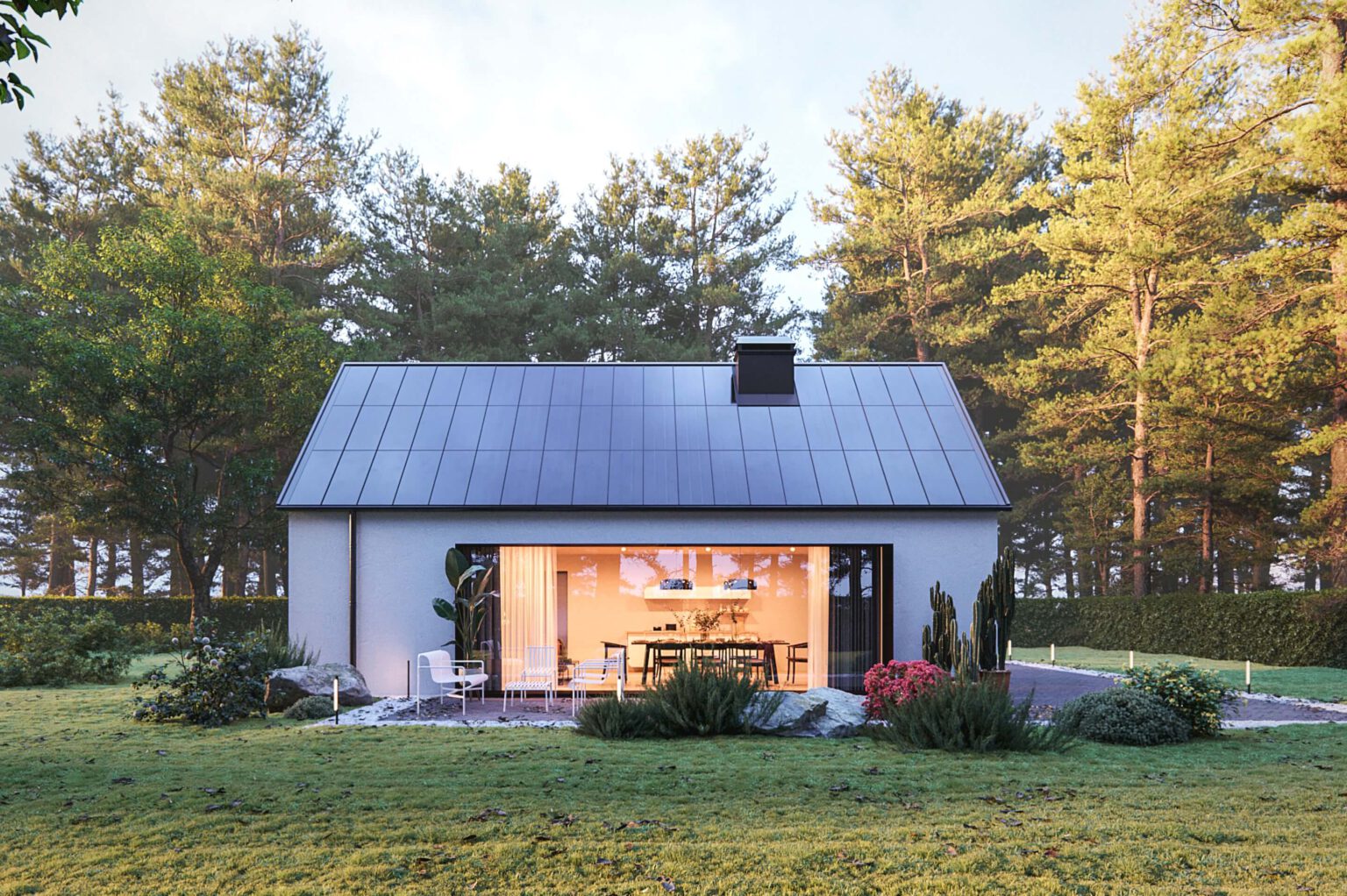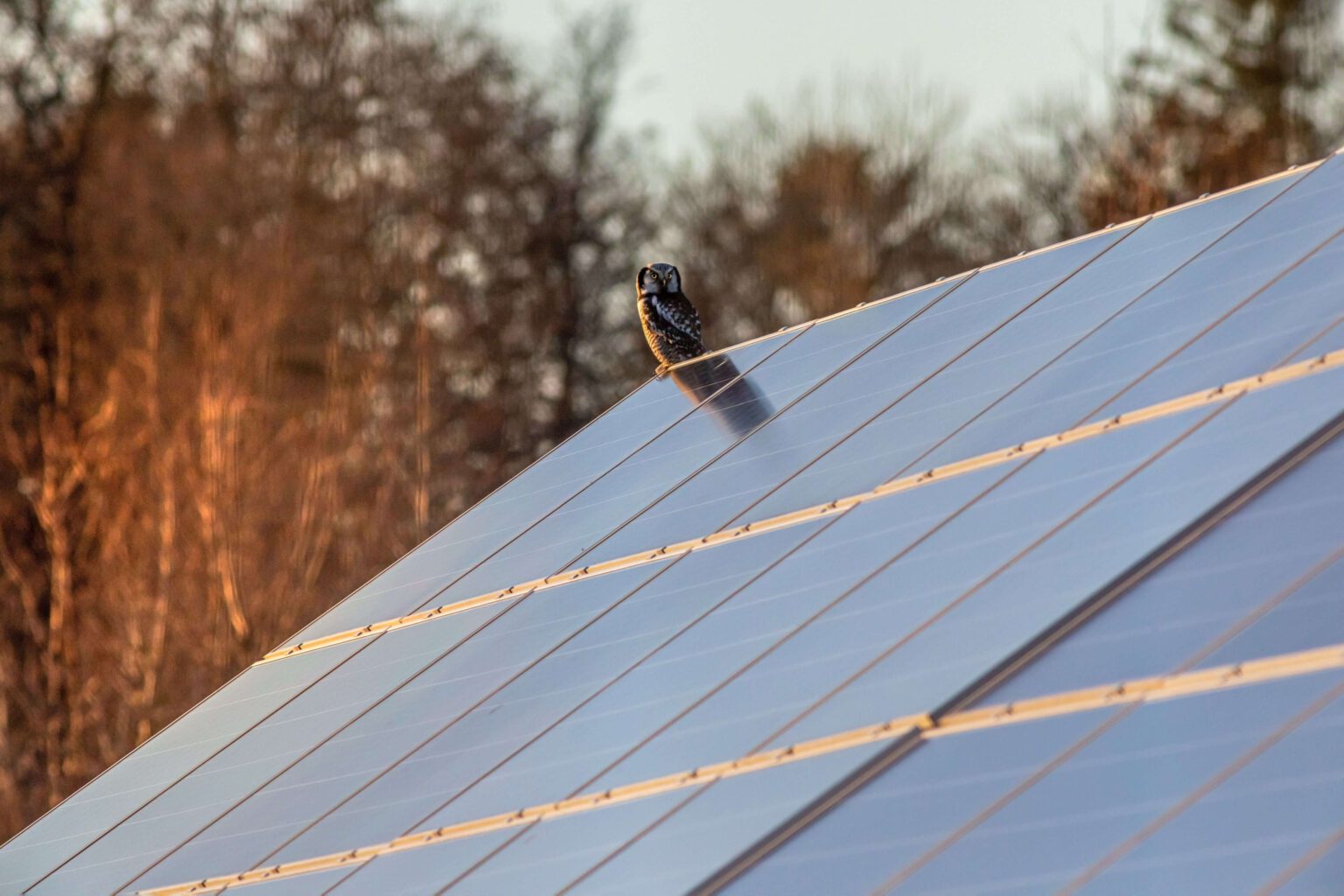
With gas prices soaring and economical uncertainty escalating worldwide, more people and companies have recently been considering going solar. But the rising popularity of solar comes with lots of conversations – some are myths – from the benefits of solar to the supposed drawbacks.
In this article, we will discuss our “favorite” 10 solar myths and facts you need to know before making a decision about going solar. (We hope you stay on the “clean” side of energy!)
- Rise of solar – When, where, how, why
- Myth 1: Solar cannot function in cloudy weather
- Myth 2: Solar does not work in extreme hot or cold temperatures
- Myth 3: Going solar costs a fortune
- Myth 4: Solar energy systems do not last long
- Myth 5: Solar panels use more energy during manufacturing than they produce
- Myth 6: Rooftop solar systems make your home unattractive
- Myth 7: Solar systems require constant maintenance
- Myth 8: Solar panels are made of toxic materials
- Myth 9: Small solar installations cannot have any environmental impact
- Myth 10: Solar energy is not reliable
- Conclusion
Rise of Solar
According to the Renewables 2021 report by IEA (International Energy Agency), renewable electricity growth is accelerating faster than ever worldwide.
The report says, the growth of the world’s capacity to generate electricity from renewable technologies – solar and wind – are on the rise. Given the recent energy crisis and the economy-shaking electricity bills especially across Europe, we can expect all-time record for new installations in the next few years.
Talking about Europe, here is a couple of stats regarding the solar energy production and consumption:
- In April 2022, Germany presented new policies to support solar energy. These incentives will support the construction of new solar and wind installations. Plus, more land will be available for renewable energy production. The end goal is to make the country’s electricity supply completely free of carbon emissions by 2035.
- France is one of the EU companies with a particular focus on solar as part of their ecological transition strategy. As of September 2022, it was announced by France’s Ministry of Ecological Transition that 1,098 MW of solar was connected to the grid in the first half of this year, from 1,534 MW in the same period a year earlier.
- As Europe’s gas prices are increasing, more EU countries have decided to make a shift towards renewable energies.
The top five countries setting new records during the summer of 2022 for the share of electricity they produced from solar are Greece, Romania, Estonia, Portugal and Belgium.
- When it comes to usage, see the top five EU countries below along with the amount of electricity they have used from the sun:
- Netherlands – 22.7%
- Germany – 19.3%
- Spain – 16.7%
What about the US? What is the country’s solar agenda?
- Although solar energy makes up a small percentage of the utility-scale electricity (3%), the new policies support the production and consumption of clean energies.
As of October 2022, the US President signed into law new legislation with larger investments in renewable energy.
- One thing to note is, residential solar power installations across the US rose by 34% from 2.9 gigawatts in 2020 to 3.9 gigawatts in 2021, according to EIA (U.S. Energy Information Administration).
In conclusion, there are various reasons why solar energy has gained popularity in recent years. The more the world’s economic and political situation pushes governments to come up with new solutions, the more incentives come to life.
While new policies make solar systems much more accessible, more individuals and companies pivot towards this sustainable and affordable form of energy.
However, there is lots of information on solar circulating all around the digital world and “warning” users about solar. How accurate are they
Let’s take a deep dive into each one of them.
10 Solar Myths and Facts
In this section, we will discuss the top 10 solar myths and what make them myths.
Myth 1. Solar cannot function in cloudy weather
One of the most widespread myths is that if there is no sun, the residential solar system does not produce any solar electricity. Is that really so?
Let’s first visit how solar rooftop systems operate and photovoltaics (PV) 101.
When the Sun shines onto a solar panel or a solar roof, energy coming from the sunlight is absorbed by the PV cells in the panel/roof.
So, one part of the argument above is correct – the sunnier the weather is, the more energy is produced. Snowy and cloudy weather can reduce the outcome. Full stop.
With that being said, this does not mean “solar does not generate energy in cloudy weather”. Simply because no matter how cloudy or snowy it is, the solar system can still generate electricity. It will just be less than the summer peak times.
According to general estimates, solar systems will generate about 15 – 25% of their normal power output on a cloudy day.
Need more evidence to change your mind?
Have a look at our references including residential and corporate projects in various Northern European countries including Estonia, Finland, and Sweden!

Myth 2. Solar does not work in extreme hot or cold temperatures
Welcome to the second most popular misbelief about solar rooftop systems.
There is a misconception that residential solar systems do not work when it is extremely cold or hot.
Here are a couple of surprising facts you should know:
- Solar systems absorb energy from the sun’s light, which means it has nothing to do with sun’s heat. That means a solar rooftop can turn sunlight into electricity even in below-freezing weather.
- High temperatures can indeed reduce the efficiency of solar cells when converting solar energy into electricity. That is why solar rooftop systems are more efficient in cooler temperatures.
- If a solar panel is at 60 degrees, the efficiency drops by around 16% compared to a 25-degree panel.
But, again, that does not mean that solar systems do not work in hot or cold temperatures. “Certain temperatures can decrease efficiency” would be a more accurate argument.
Roofit.Solar roofs can operate in -40 to +85 °C conditions. If you want to learn more about what makes our solar roofs special, check our products here!
Myth 3. Going solar costs a fortune
In the previous sections, we discussed the effect of the recent energy crisis and its reflection on energy strategies of various countries from the US to France.
We also underlined that new policies and incentives along with the rising notion of sustainability and environmentalism have made renewable energies more accessible for more people.
“It costs a fortune” depends on individuals, but we can easily posit that solar systems have become more affordable over the past years. As an example, solar photovoltaic module prices have fallen by 89% since 2010.
If you think about the soaring energy prices and the negative effects of global climate warming, solar systems are likely to pay you back.
From another perspective, installing a residential solar energy system is a new way of increasing your property’s value. If that sounds intriguing, read more about this in our article Does solar energy increase your home value.

Myth 4. Solar energy systems do not last long
That puts a big smile on our faces whenever we come across this statement.
Rooftop solar systems are highly durable, fire-secure, lightweight, and weatherproof. That is why they can last very long.
Many solar panel manufacturers provide an average of 10-year product warranty and a 25-year performance warranty. That means there is a guarantee the panels will produce electricity no less than 80% of their power output rating at the end of 25 years.
In general, the life expectancy of a solid metal roof is 50-100 years. For our quality metal panels, we offer a company warranty of 50 years. Metal roofs do not rot, rust, split, or crack.
Want to hear more? Read more about the benefits of a metal roof.
Myth 5. Solar panels use more energy during manufacturing than they produce
It is a fact that all forms of energy production have some impact on the natural environment.
With that being said, the environmental impact of manufacturing solar panels is minimal compared to the extraction of fossil fuels, gas, or other energy sources.
There is no air pollution or greenhouse gases during the operation of solar energy technologies and power plants. In fact, more and more people going solar can have a “positive, indirect effect on the environment when solar energy replaces or reduces the use of other energy sources that have larger effects on the environment”, as stated by EIA.
In short, there is a reason – well, more than one – many countries from Germany to Australia are accelerating their renewable energy projects as part of their future energy strategies, instead of staying with existing solutions, as we mentioned in previous sections.
In conclusion, solar energy is one of the best ways to tackle climate change.
Myth 6. Rooftop solar systems make your home unattractive
Here is another favorite myth of ours at the Roofit.Solar team.
Regular solar panels are seen as “bulky” and “unattractive”. They do not blend in with the environment, and it is very easy to spot them on the roof even from a distance.
That is the very reason Andri Jagomägi, our founder and Chairman of the Advisory Board Estonia, came up with the core idea of Roofit.Solar.
As Andri was considering a solar solution for his own house, he asked that question:
“What if there were a solar roof that looks like a regular roof, generates solar energy, and looks beautiful all at the same time?”
Sounds interesting? Want to find out more about Roofit.Solar? Learn more about us!
For those, who do not want to compromise the looks of their homes while going solar, Roofit.Solar is “the” option.
Our metal solar roofs, product of advanced solar technology and minimalistic Nordic design, blend in any environment be that the city centre, a rural area, or nature.
While they look like traditional steel roofs, they generate as much electricity as regular solar panels.
Discover more about our solar roofs.

Myth 7. Solar systems require constant maintenance
Since it is relatively a new technology compared to the other energy forms, there are misbeliefs regarding the amount of maintenance a solar system would require.
We’ll go straight to the point – solar systems require minimal maintenance to function, which includes yearly inspection to spot some potential problems.
The removal of some debris, leaves, or dirt obstructing the sun’s rays may also be required from time to time.
One thing to note is, usually, regular solar panels need more maintenance during heavy snowfall compared to Roofit.Solar products. What differentiates us from the panels is that snow usually melts itself as the metal solar roof gets warm.
Myth 8. Solar panels are made of toxic materials
Solar energy is a renewable source of power. In this way, it helps reduce greenhouse gas emissions and tackle climate change.
As well as that, it helps improve air quality. In a nutshell, solar energy protects our planet, not harm it.
With that being said, there is a couple of points we need to highlight when it comes to the production process of solar systems.
- 96% of all solar panels installed globally are made up of silicon crystalline PV cells encased in polymer material and protected by glass. They do not contain toxic materials except for a trace amount of lead used in the solder.
As solar energy has been gaining popularity, more and more manufacturers are following suit – companies are the ones responsible for the safe disposal of waste.
- After the panels have reached their lifetime, they are sent to specialized PV recycling facilities where they are taken apart and recycled.
- One important note to keep in mind is that nickel batteries, a very old technology, are already banned in a large number of countries because of their high toxicity.
Myth 9. Small solar installations cannot have any environmental impact
In this section, we will let the stats say it all:
- On average, one 10 kW solar roof eliminates around 4 tons of carbon emissions annually, which is roughly equivalent to planting over 100 trees per year.
- Larger installations can have 10 times the effect.
- There are no emissions with a solar system. It completely relies on sun’s energy and then converts it into electricity or hot water, meaning there are no greenhouse gases. A solar rooftop system can reduce the carbon footprint of your home by 80% in one year.
- Since they last a long time, they do not need any maintenance, whereas traditional energy solutions require relatively regular replacement, resulting in waste.
Keeping all these in mind, we can confidently conclude that each solar roof owner plays a huge role in mitigating accelerated climate change.

Myth 10. Solar energy is not reliable
That myth takes us back to the first one – “Solar cannot function in cloudy weather”.
As the sun goes down at night, people believe that solar energy systems are not reliable or worth the investment. Technically, solar panels do not produce energy at night but that’s not the bottom line.
Solar systems enable two indirect nighttime energy solutions: Electric grid connection with net metering and solar battery storage. Both allow your solar energy system to provide electricity when your solar panels are resting.
And after all, the sun always comes back in the morning! This means that solar systems are as reliable as solar energy, which is free, infinite, and green.
Conclusion?
Solar has become increasingly popular, and it seems this popularity will continue to rise. However, so will the number of myths and misbeliefs associated with it.
If you are considering to switch to solar energy, these are the things that you should keep in mind:
- Solar energy is a reliable form of energy.
- While finances vary for each individual, solar systems have become more affordable and accessible due to the global energy crisis over the past few years.
- A solar rooftop system is long-lasting and requires a very little amount of maintenance.
- A solar roof can look very beautiful and blend into any environment.
- Last but not least, solar systems definitely help us tackle global climate change by reducing carbon footprint and waste.
Here at Roofit.Solar, we offer you a smart, practical, and “beautiful” solution. A “2 in 1” solution with black metal roofs that generate solar energy.
To learn more about how it can fit your house and the process in general, contact our team!
Looking forward to empowering you with solar energy, just like hundreds of our other clients!